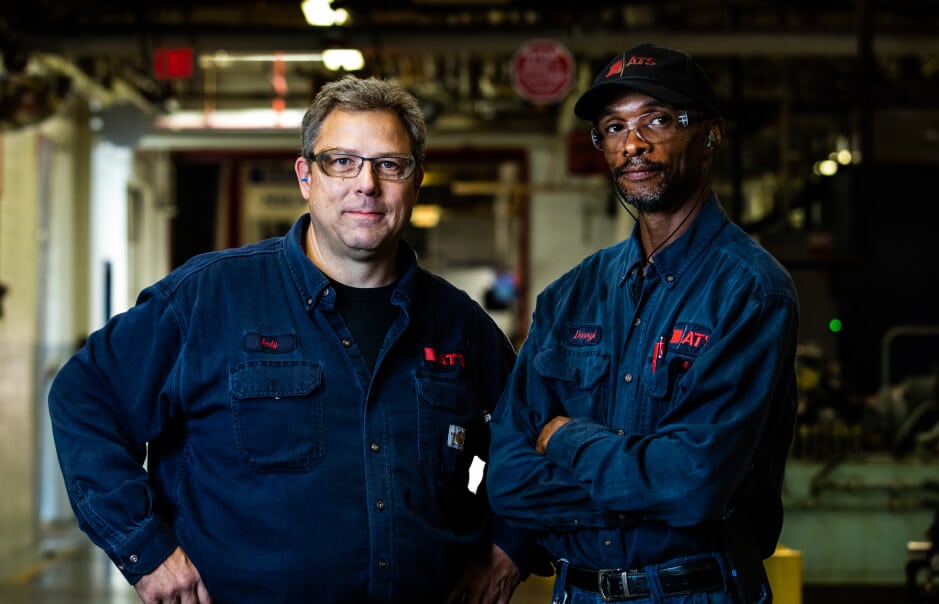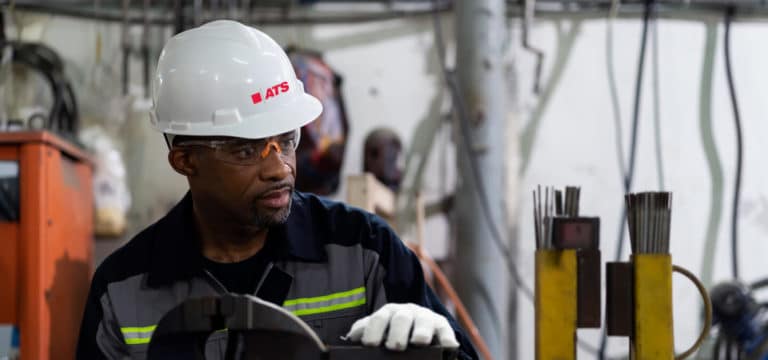The threat of a skills gap in United States manufacturing is no new concept. The manufacturing “skills gap” has caused a host of macro-level economic concerns. However, the effects of a technical talent shortage can also significantly impact your organization on a micro-level.
We’ve broken down five ways a manufacturing skills gap at your facilities can negatively impact your business that you may not be aware of.
What is the manufacturing skills gap?
When an industry has a critical need for technical expertise, but these skills are lacking in the available labor pool, it’s referred to as a skills gap. The skills in demand could be just about anything, from the knowledge needed to service a crucial piece of equipment to the ability to code software used to run it. The manufacturing sector in particular is sensitive to these gaps because of the highly specialized nature of the work and the high levels of technological expertise at play.
In most cases, skills gaps are created by an aging workforce combined with a lack of younger, tech-savvy people entering the workforce. As older workers retire, the knowledge they have accrued needs to be replaced by younger employees. Fewer young people in the labor pool means it’s much more difficult to find qualified individuals to step into those positions. The situation may be exacerbated by cultural shifts that result in certain professions falling out of favor with younger generations, as has been seen with the manufacturing sector. Educational institutions also may de-emphasize teaching these skills in favor of industries seen as more desirable.
The impact of a skills gap go far beyond individual companies struggling to hire experienced people. Compounded throughout the entire manufacturing industry, skills gaps can have significant macroeconomic effects that can hurt competitiveness on the global stage and drive down growth.
Employee safety risks
The safety of your employees should be a top priority. When suffering from a skilled talent shortage, the machines that are neglected can malfunction, jeopardizing employee safety.
Those without proper training put themselves and their peers at even more risk because they are far more likely to ignore safety protocols and misuse equipment. In other cases, not having enough people with relevant experience can lead to increased workloads for those who do, leading to fatigue that increases the risk of accidents. Whether it is a lack of bodies or a lack of bodies with advanced skillsets, suffering from a technical shortage puts your employees — and your entire operation — at risk.
Revenue loss and downtime
A manufacturing skills gap can also lead to decreased production output, which will hinder the growth of the company. Skilled talent shortages can lead to increased downtime and reduce production output in several ways. For instance, if equipment breaks down and manufacturing employees don’t have the skills to get your production back up and running quickly, it may become necessary to use an external maintenance provider. In many cases, a dearth of skilled labor can create bottlenecks in production that can lead to missed quotas and longer-than-expected lead times. No matter what the direct effect of a skills gap looks in any given facility, the results are always lost profits.
Decline in product quality and customer satisfaction
When production is stalled, you may not output the materials needed to meet your customers’ requirements. There is also the potential for machines to produce low-quality products or malfunction if they are not properly maintained.
In manufacturing, customer services and customer satisfaction are frequently the differentiators in choosing and remaining with a supplier. Over time, unhappy customers may consider other suppliers if their delivery quotas or product quality expectations are not met. Which in turn leads to a loss of your profits, too. Maintaining a higher level of expertise within your facilities means you can avoid these issues, producing higher-quality goods and forging stronger bonds with your customer base.
Increased competitive pressure
If you are unable to keep your customers happy, they may start to look for other alternatives to get the products they need. This opens the door for your competitors to swoop in and steal your market share. Whether it be another product supplier from the U.S. or from overseas, unsatisfied customers may turn to your competition to meet demand. Closing the skills gaps in your operations is essential to building the operational resilience you need to maintain your competitive edge. This is why it behooves you to concentrate on recruiting, training and retaining skilled workers before your competitors take advantage of your stagnant and aging workforce.
Increased training and onboarding costs
The more unskilled and inexperienced workers you have to hire to fill crucial roles, the more it can cost you. When the labor pool is saturated with individuals who don’t have the prerequisite expertise, it’s on you to make sure they’re brought up to speed. The most obvious way this impacts your operations is how much you need to spend on education and training. Not only does this require resources of time and money, but extended onboarding periods also create slowdowns in production. Training new hires also means more-experienced workers are pulled away from value-added tasks. This also can slow down efforts to achieve necessary certifications or put your operations at risk of regulatory non-compliance.
Most common skill gaps in manufacturing
Skill gaps are more than just a lack of experience with a specific machine or process. Virtually every aspect of manufacturing can be impacted by them. Some of the most common areas affected by a lack of skills include:
- Technical maintenance and repair skills: Keeping assets online for as long as possible requires some highly specialized knowledge in terms of machine diagnostics, robotics troubleshooting and PLC programming, among other areas.
- Mechanical aptitude: Being able to read blueprints, use tools and follow safety protocols are basic skills that manufacturing workers should have, but are unfortunately becoming less common among job candidates.
- Digital fluency: Today’s manufacturing environment is more technologically advanced than ever, and there’s a rapidly growing need for workers who understand IIoT dashboards, CMMS systems and interfacing with smart machines.
- Soft skills: Skill gaps aren’t just technical — manufacturers need people who can solve problems, communicate effectively with others and take on leadership roles.
Overall, there’s an ongoing problem in the industrial trades caused by a lack of foundational knowledge. This also is reflected in a shrinking number of potential hires who hold the certifications needed for certain jobs.
Addressing the skills gap in manufacturing
One of the most effective ways manufacturers can deal with skills gaps is to work with a partner who can offer suitable replacements for the talent they’re missing. ATS’s Technical Workforce Solution can provide you with skilled maintenance support that means you’ll have one less thing to worry about when it comes to your workforce. ATS can deliver training, onboarding and long-term workforce continuity support that ensures you can reduce downtime, improve workplace safety and protect your customer relationships.
If you want to learn more about how ATS can help reduce your burden, reach out and speak with an experienced member of our team to talk about your needs.
If you’re feeling the pain of a skilled talent shortage, our Technical Workforce Solution may be able to bring you some relief. Contact us today for more information.






